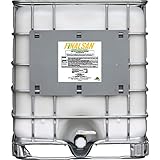After the best way of How do you permanently stop weeds from growing in gravel? Primarliy, To permanently stop weeds from growing in gravel, use a combination of a high-quality weed barrier fabric, proper gravel depth, and apply a long-lasting pre-emergent herbicide.
Gravel paths, driveways, and landscaping can enhance the aesthetic appeal of any outdoor space. However, weeds can quickly turn that clean, minimalist look into an unkempt mess.
Permanently stopping weeds from growing in gravel may seem challenging, but there are several effective methods that can help.
This article explores the 10 best ways to stop weeds from growing in gravel permanently. Whether you’re a DIY gardener or a landscaping pro, these techniques will help you maintain a weed-free gravel surface.
How Do You Permanently Stop Weeds From Growing In Gravel? A Complete Guide
1. Using Landscape Fabric
Using landscape fabric is a common and effective way to prevent weed growth under gravel. It acts as a barrier that stops weeds from sprouting while allowing water to pass through. Before laying gravel, place the fabric over the soil to create a protective layer.
is a common and effective way to prevent weed growth under gravel. It acts as a barrier that stops weeds from sprouting while allowing water to pass through. Before laying gravel, place the fabric over the soil to create a protective layer.
The fabric must be installed correctly to be effective—overlapping the seams and securing it with landscape staples. This method works well in driveways, garden paths, and decorative gravel beds. Over time, this fabric prevents weed seeds from accessing the soil below.
It’s essential to use high-quality, UV-resistant fabric to avoid deterioration. Replace or repair any torn sections to maintain its effectiveness. Proper installation ensures long-lasting weed protection.
Pros:
- Long-lasting control
- Water permeable
- Easy installation
- Cost-effective
- Prevents soil erosion
- Blocks sunlight
- Reduces maintenance
Cons:
- Can tear easily
- Needs replacement
- Doesn’t kill roots
2. Applying Salt
Salt can be used to kill weeds by dehydrating them and altering the soil’s composition. Dissolve salt in water and apply it directly to the weed-infested areas in the gravel. Be careful to avoid nearby plants, as salt is non-selective.
can be used to kill weeds by dehydrating them and altering the soil’s composition. Dissolve salt in water and apply it directly to the weed-infested areas in the gravel. Be careful to avoid nearby plants, as salt is non-selective.
This method is best suited for areas where no other vegetation is wanted. The salt stays in the soil and prevents new weeds from germinating. It is particularly effective in driveways and paths.
Use rock salt or table salt mixed with water for application. Reapply every few weeks for long-term control. Avoid using too much, as excessive salt can damage surrounding ecosystems.
Pros:
- Easy to apply
- Affordable option
- Long-lasting effect
- No special tools
- Easily accessible
- Natural method
- Works quickly
Cons:
- Kills all plants
- Soil damage risk
- Not environmentally friendly
3. Installing a Weed Membrane
Weed membranes are a durable alternative to traditional landscape fabrics. These membranes are thicker and more resistant to tearing and degradation. They offer excellent weed suppression and last for several years.
are a durable alternative to traditional landscape fabrics. These membranes are thicker and more resistant to tearing and degradation. They offer excellent weed suppression and last for several years.
Lay the membrane down before adding gravel, making sure it’s tightly secured. Overlap the edges and avoid leaving any gaps to prevent weeds from growing through. This method creates a strong barrier against weeds.
Weed membranes are ideal for both residential and commercial gravel installations. They also improve drainage and stabilize the gravel layer. Choose a UV-resistant material for better performance.
Pros:
- Stronger material
- Long lifespan
- Excellent coverage
- Prevents root growth
- Stabilizes gravel
- Easy maintenance
- Water drains well
Cons:
- Higher cost
- Difficult to cut
- Needs proper installation
4. Using Vinegar Spray
Vinegar is an effective natural herbicide that kills weeds by breaking down their cell structure. Mix white vinegar with a small amount of dish soap for better adherence to weed leaves. Spray the mixture directly on the weeds on a sunny day.
This method works best on young, actively growing weeds. The acidic properties of vinegar kill the top growth quickly. However, multiple applications may be needed for deep-rooted weeds.
Use a sprayer for even coverage and avoid spraying desired plants. This method is chemical-free and safe for pets and kids. Store-bought horticultural vinegar is even stronger and more effective.
Pros:
- Natural solution
- Readily available
- Quick results
- No soil damage
- Pet-friendly
- Budget-friendly
- Easy to apply
Cons:
- Needs reapplication
- Kills only tops
- Not selective
5. Boiling Water
Boiling water is a fast and chemical-free way to kill weeds in gravel areas. Pour boiling water directly on the weeds to destroy their cellular structure. This method kills weeds instantly on contact.
It is most effective for small patches or isolated weeds. Boiling water is ideal for driveways, paths, and gravel patios. Repeat treatment may be needed for stubborn or deep-rooted weeds.
Use caution when handling boiling water to avoid burns. It is safe for pets, children, and the environment. This method is best for light to moderate infestations.
Pros:
- No chemicals
- Works instantly
- Safe for pets
- Free method
- No residue
- Easy to use
- No equipment needed
Cons:
- Labor-intensive
- Limited area use
- Doesn’t kill roots
6. Applying Herbicides
Commercial herbicides provide fast and reliable weed control in gravel areas. Select a non-selective herbicide for areas where no plants are desired. Apply according to the manufacturer’s instructions to ensure safety and effectiveness.
provide fast and reliable weed control in gravel areas. Select a non-selective herbicide for areas where no plants are desired. Apply according to the manufacturer’s instructions to ensure safety and effectiveness.
This method is ideal for large gravel spaces and tough perennial weeds. Herbicides kill both the foliage and the root system. Choose a long-lasting formula to prevent future growth.
Wear protective gear and avoid windy days to reduce drift. Repeat application may be necessary for dense infestations. Always store herbicides safely out of reach of children and pets.
Pros:
- Very effective
- Kills roots too
- Quick action
- Long-lasting
- Covers large areas
- Easy to apply
- Reduces labor
Cons:
- Chemical exposure
- Environmental risk
- Not pet-safe
7. Flame Weeding
Flame weeding involves using a propane torch to burn weeds to death. The intense heat destroys plant cells, causing the weeds to die within hours. It is best used for driveways and paths without flammable materials nearby.
involves using a propane torch to burn weeds to death. The intense heat destroys plant cells, causing the weeds to die within hours. It is best used for driveways and paths without flammable materials nearby.
Flame weeders are available in handheld and wheeled versions. This method works well for annual weeds and surface growth. Avoid using near dry grass or wood structures.
Wear fire-resistant gloves and safety glasses while operating. A controlled environment is necessary to prevent accidental fires. Flame weeding is fast and satisfying for spot treatments.
Pros:
- Instant results
- No chemicals
- Precise control
- Eco-friendly
- Reusable tool
- Kills seeds
- Works on gravel
Cons:
- Fire risk
- Needs equipment
- Not root effective
8. Solarization
Solarization uses plastic sheeting to trap heat and kill weeds over time. Cover the gravel with clear plastic and leave it in place for several weeks. The trapped heat kills weed seeds and roots.
to trap heat and kill weeds over time. Cover the gravel with clear plastic and leave it in place for several weeks. The trapped heat kills weed seeds and roots.
This method works best in hot climates during summer months. It can sterilize the top layer of soil, preventing future weed growth. Solarization also kills pests and pathogens.
Ensure the plastic is tightly sealed around the edges. This method is effective but slow. It’s ideal for preparing new gravel areas.
Pros:
- Long-term control
- Kills seeds
- Pest reduction
- Chemical-free
- Soil sterilization
- Prevents regrowth
- Budget-friendly
Cons:
- Time-consuming
- Needs sun
- Unsightly sheeting
9. Pouring Concrete Underlay
Pouring a concrete underlay under gravel ensures that nothing can grow through it. This method provides a permanent solution by completely sealing off the soil. Add a gravel layer on top for a finished look.
Use a slight slope for drainage and avoid water pooling. This approach is best for permanent installations like driveways or high-traffic paths. It eliminates the need for weed treatments.
Concrete is durable and requires minimal maintenance once installed. However, it can be expensive and labor-intensive. Ensure proper installation for best results.
Pros:
- Permanent solution
- Zero maintenance
- Very durable
- Weed-proof layer
- Stable surface
- Good drainage
- No reapplication
Cons:
- High cost
- Installation effort
- Not natural
10. Mulching with Crushed Stone
Using crushed stone as mulch over gravel adds an extra layer of weed suppression. The weight and compact nature of the stones smother weeds and reduce sunlight penetration. Choose angular stones for better interlocking and stability.
as mulch over gravel adds an extra layer of weed suppression. The weight and compact nature of the stones smother weeds and reduce sunlight penetration. Choose angular stones for better interlocking and stability.
Spread a thick layer (at least 2 inches) for best results. This technique works well for decorative gravel beds and walkways. Crushed stone also improves drainage and appearance.
Combine with a weed membrane for enhanced protection. The combination creates a dual barrier against weeds. Maintain the stone layer periodically to fill in gaps.
Pros:
- Enhances appearance
- Long-lasting mulch
- Improves drainage
- Smothers weeds
- Natural look
- Low upkeep
- Resists shifting
Cons:
- Heavy material
- May settle
- Costly upfront
How Do You Permanently Stop Weeds From Growing In Gravel FAQs
1. Can weeds grow through gravel?
Yes, weeds can grow through gravel if there’s soil, light, and moisture available beneath or between the stones.
2. What is the best natural way to kill weeds in gravel?
Boiling water or vinegar are effective natural options for killing weeds in gravel areas.
3. How often should I reapply vinegar or salt?
Reapplication may be needed every few weeks depending on rainfall and weed regrowth.
4. Is landscape fabric better than weed membrane?
Weed membrane is generally more durable and tear-resistant compared to standard landscape fabric.
5. Are commercial herbicides safe around pets?
Many herbicides are not safe for pets; always check the label and allow drying time before reentry.
6. How long does solarization take to work?
Solarization typically takes 4 to 8 weeks to effectively kill weeds and seeds.
7. Can I use more than one method together?
Yes, combining methods like fabric and crushed stone increases effectiveness and longevity.
Conclusion
Maintaining a weed-free gravel area is achievable with the right techniques and consistent upkeep. By implementing one or more of the 10 methods discussed, you can effectively stop weeds from growing permanently.
Permanently stopping weeds from growing in gravel requires a proactive, layered approach. By combining physical barriers like high-quality landscape fabric with chemical solutions such as pre-emergent herbicides, you can effectively block weed growth from both above and below gravel.
Regular maintenance, proper gravel depth, and occasional spot treatments will help ensure your gravel areas remain clean, neat, and weed-free for years to come
Choose the solution that best fits your landscape needs and commit to routine checks to ensure long-term success. Take control of your gravel space today—start applying these proven weed-stopping strategies and enjoy a clean, beautiful landscape year-round!








